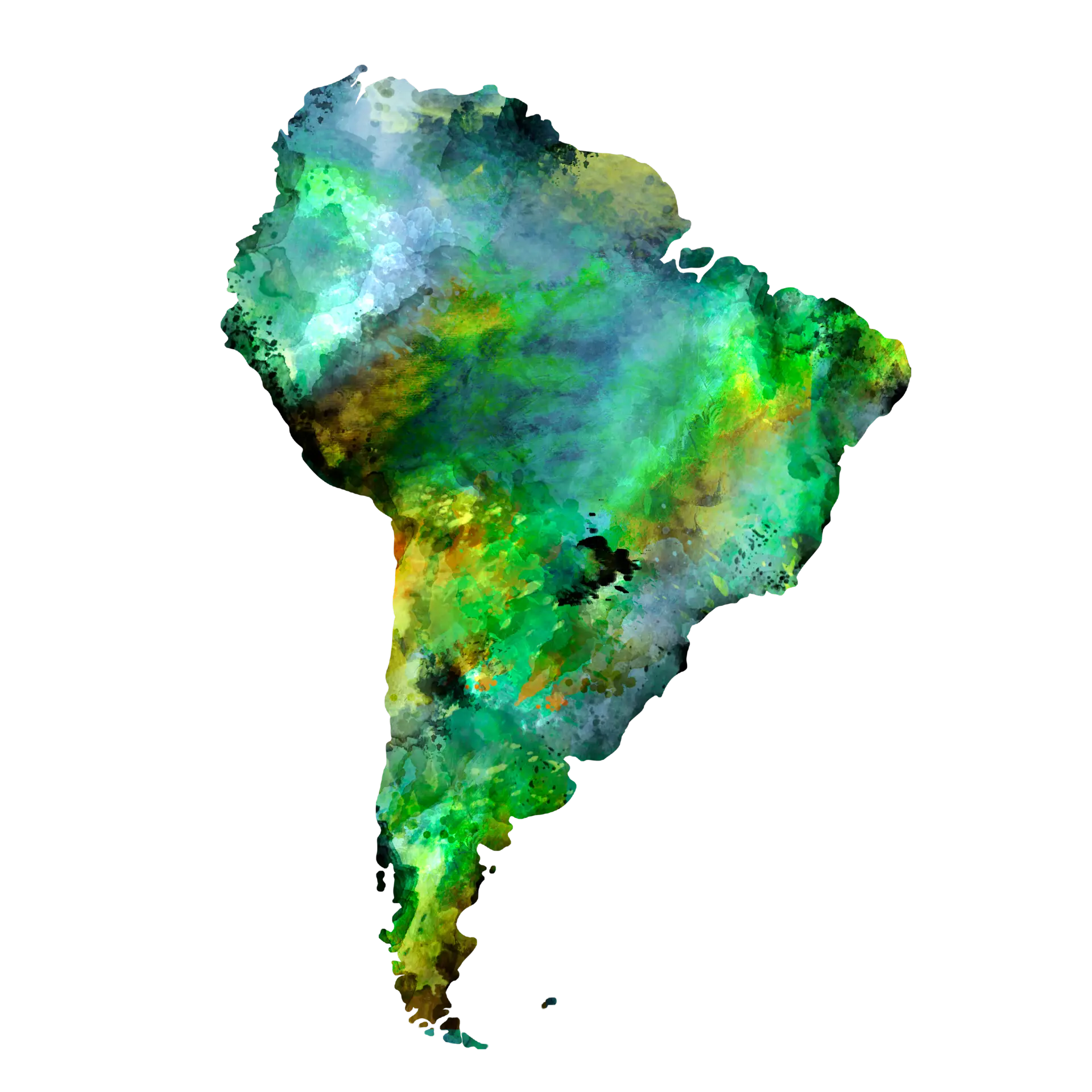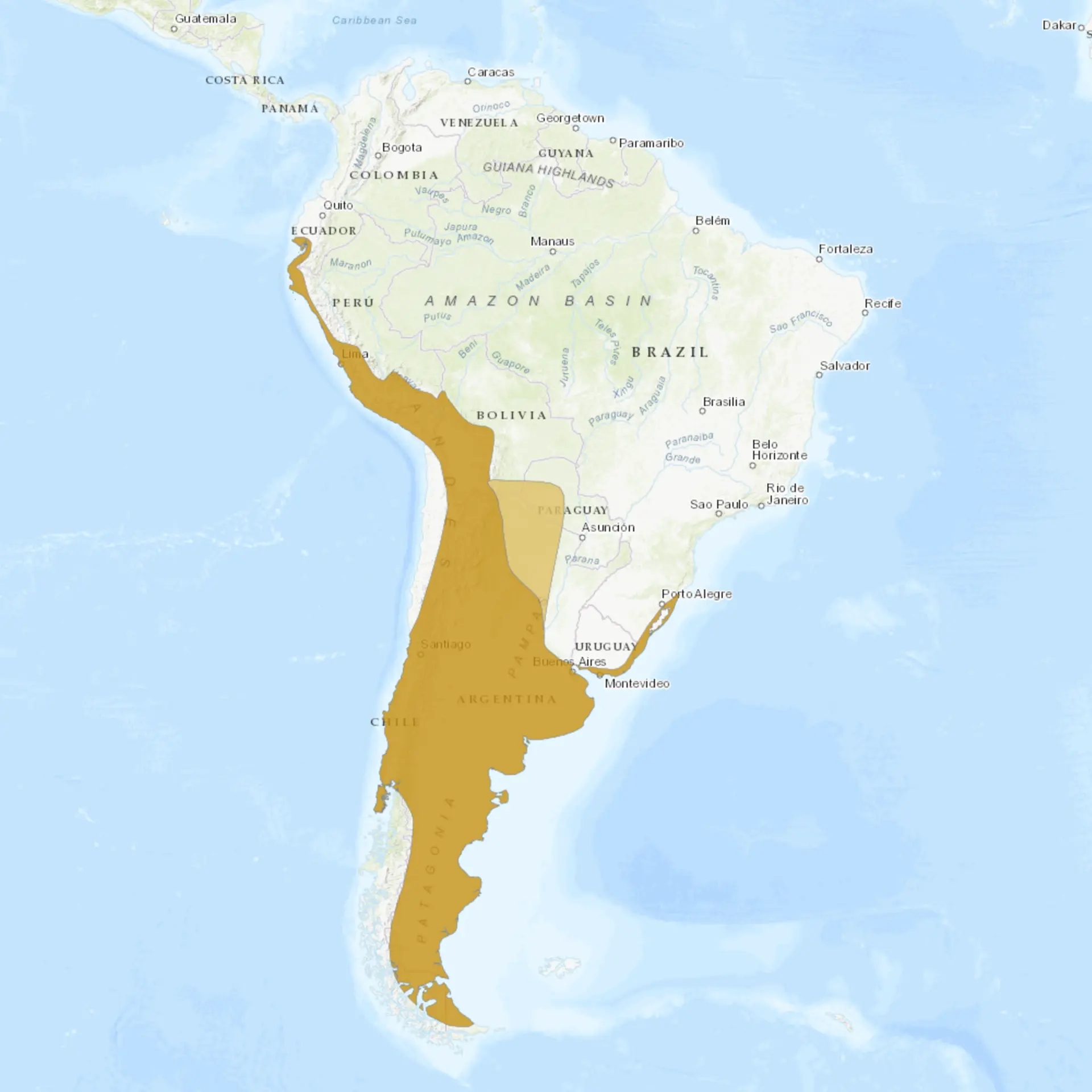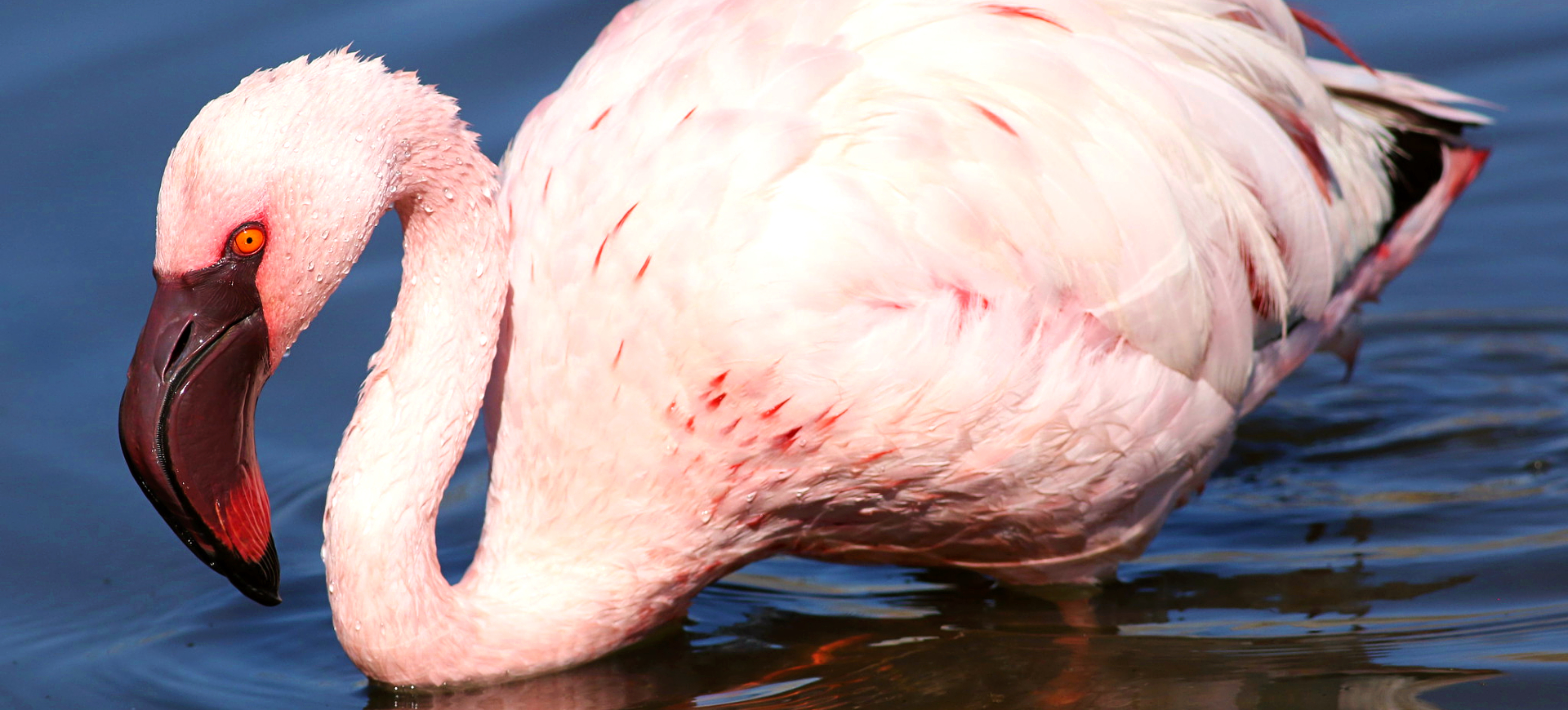Overview
The Chilean flamingo (Phoenicopterus chilensis) is a large wading bird recognized for its striking pink plumage and long, slender legs. It is native to South America, particularly in regions of Argentina, Bolivia, Chile, Paraguay, Peru, and Uruguay, where it inhabits saline lakes, lagoons, and estuaries. This species is particularly known for its filter-feeding technique, using specialized lamellae in its bill to strain small organisms from the water. It is a highly social bird, often seen in large flocks that can number thousands.
Chilean flamingos exhibit a distinctive coloration that is less intense than some other flamingo species, with pale pink feathers and darker reddish-pink streaks on their wings. The color of their plumage is derived from carotenoids in their diet, which includes algae and small invertebrates. Their black-tipped bill is uniquely adapted to feeding upside-down, a behavior that helps them extract food efficiently. Their long legs allow them to wade into deeper waters than smaller wading birds, giving them access to various feeding grounds.
These flamingos are migratory and nailing across regions for food and suitable breeding sites. Breeding colonies are often found in remote and harsh environments, such as the Andes’ high-altitude salt flats and lagoons. The Chilean flamingo is an indicator species, meaning its health reflects the condition of its habitat, making it particularly important for wetland conservation efforts. Although not currently classified as endangered, its populations face habitat loss, climate change, and human activity threats.
Taxonomy
Kingdom
Phylum
Class
Order
Family
Genus
Species
Type
Current distribution:
Chilean flamingos are primarily distributed across South America, from central Chile and southern Peru to eastern Argentina and Uruguay. Major populations are concentrated in Argentina and Bolivia, particularly in the high-altitude salt flats of the Andes. Seasonal migrations expand their range, including sightings in Paraguay and southern Brazil during certain times of the year. Small populations have also been introduced to North America and Europe, though these are not considered part of their native distribution.
Human activity has lost habitat in some regions, particularly coastal and lowland wetlands. However, conservation efforts have helped maintain critical breeding sites like the Atacama Desert in Chile. Climate change and water management practices like dam construction have also influenced their distribution patterns. Despite these challenges, the Chilean flamingo remains widespread and adaptable, though some populations are declining.
Physical Description:
Chilean Flamingos are beautiful, large birds characterized by their pinkish-white feathers, long, slender necks, and thin legs that end with webbed feet. They boast a strikingly bright pink patch at the rear which is particularly noticeable when the bird is in flight. Their beak, uniquely shaped, is downward bending and colored white with a black tip.
These birds also have a distinctive pinkish coloration around their legs and joints due to carotenoid pigments in their diet. The eyes are yellow, and the overall length of a fully grown flamingo can range between 110 to 130 centimeters, making them one of the larger species of flamingos.

Lifespan: Wild: ~40 Years || Captivity: ~60 Years

Weight: Male: 5.5 - 8.8 lbs (2.5 - 4 kg) || Female: 4.4 - 7.7 lbs (2 - 3.5 kg)

Length: Male: 43-51 in (110-130 cm) || Female: 43-51 in (110-130 cm)

Height: Male: 43-51 in (110-130 cm) || Female: 43-51 in (110-130 cm)

Wingspan: Male & Female: 55 in (140 cm)

Top Speed: 31 mph (50 km/h) in flight
Characteristic:
Native Habitat:
The Chilean Flamingo is native to South America and can be found in various habitats, from coastal areas to high-altitude Andean plateaus. These birds prefer habitats near large bodies of water, including freshwater and saltwater environments. The water bodies can be shallow lakes, lagoons, marshes, and coastal mudflats.
Chilean Flamingos are well-adapted to their habitats. They can tolerate highly saline environments that are inhospitable to many other species. During the breeding season, they build cone-shaped nests out of mud on the ground near water bodies, which provide a safe place for the chicks once they hatch.
Biomes:
WWF Biomes:
Biogeographical Realms:
Continents:
Diet:
Diet & Feeding Habits:
The Chilean Flamingo’s diet primarily consists of algae, diatoms, and invertebrates such as brine shrimp and mollusks. They have a specialized feeding mechanism involving their beak and tongue. The beak is uniquely adapted for filter feeding. While foraging, they immerse their head upside down in the water and sweep them side to side. Their tongue acts as a pump, pushing water through comb-like structures in their beak, filtering out food items.
They feed both during the day and night, depending on the food availability. Interestingly, the pink coloration of their feathers is due to the presence of carotenoid pigments in the algae and invertebrates they consume.
Mating Behavior:
Mating Description:
Chilean Flamingos breed in large colonies, with courtship involving group displays in which individuals synchronize their movements. This includes head-flagging, stretching their necks and turning their heads side-to-side; wing salutes, spreading their wings to display contrasting colors; and twist-preening.
The nests are constructed as mounds of mud where the female lays a single egg. Both males and females are responsible for incubating the egg, which hatches after approximately 27-31 days. Once the chick hatches, both parents feed it with crop milk, a nutrient-rich secretion produced in their digestive tract.
Reproduction Season:
Birth Type:
Pregnancy Duration:
Female Name:
Male Name:
Baby Name:
Social Structure Description:
Chilean Flamingos are highly social birds living in large colonies, consisting of thousands of individuals. These colonies provide safety in numbers, reducing the risk of predation for individual birds. The social structure within these colonies is complex, with birds often forming pairs or small groups within the larger colony.
The social interactions among Chilean Flamingos include courtship displays and communal nesting. They also engage in synchronized behaviors, such as feeding and preening. Social bonds are strong among flamingos, and they often perform group displays to strengthen these bonds. Flamingos communicate using vocalizations and body displays.
Groups:
Conservation Status:
Population Trend:
Chilean Flamingos have a wide distribution across South America, but their population trend has been decreasing, and they are currently listed as Near Threatened by the IUCN. They exist in significant numbers across Argentina, Bolivia, Brazil, Chile, and Peru, although the population in each region varies. This species often congregate in large colonies, including thousands of individuals.
Several factors, including food availability, habitat conditions, and human disturbances, influence the size of the Chilean Flamingo population. Their numbers can fluctuate greatly from year to year, especially in response to changes in water levels and food resources in their wetland habitats. The flamingos’ mating success and the chicks’ survival are also important factors that influence the population size.
Population Threats:
The Chilean Flamingo faces several threats contributing to their declining population trend. The main threat to these flamingos is habitat loss and degradation due to human activities, such as mining, agriculture, and urban development. These activities can result in the loss of suitable nesting sites and feeding grounds, significantly impacting the flamingo populations.
Another major threat is illegal egg collection, hunting for food, and the pet trade. Climate change is also a potential threat, as it can cause changes in the water levels of the wetlands, affecting the availability of food and nesting sites. Disease outbreaks and predation by natural predators, such as foxes and birds of prey, can also impact the population size of Chilean Flamingos.
Conservation Efforts:
Conservation efforts for the Chilean Flamingo are focused on protecting their habitats and reducing the threats they face. Protected areas have been established in their range, providing safe nesting and feeding grounds for the flamingos. Environmental education and awareness programs are also important for reducing threats from human activities, such as egg collection and hunting.
In addition to these in-situ conservation efforts, ex-situ conservation measures such as captive breeding programs are also in place in various zoos worldwide. These programs aim to maintain a healthy population of Chilean Flamingos in captivity and potentially reintroduce them into the wild. Research on the biology and ecology of Chilean Flamingos is also crucial for informing conservation strategies and management plans.
Additional Resources:
Fun Facts
- The Chilean Flamingo’s pink coloration comes from the carotenoid pigments in their diet.
- They perform a unique “marching” display during courtship, where hundreds of flamingos move together in a coordinated manner.
- They have a lifespan of up to 40 years in the wild and up to 60 years in captivity.
- Unlike many birds, flamingos are not sexually dimorphic, meaning males and females look alike.
- Chilean Flamingos can drink water that is almost at boiling point from geysers and volcanic springs in the Andes.
- Despite their thin legs, flamingos are strong fliers and can reach speeds up to 50 km/h.
- Their oddly-shaped beak has a filtering mechanism to separate water from food.
- The flamingo’s one-legged stance is a way to conserve body heat as their legs are exposed and lack feathers.
- Both male and female flamingos share the responsibility of incubating the egg and caring for the chick.
- The word ‘flamingo’ comes from the Spanish word ‘flamenco’ which means fire, referring to their bright color.












